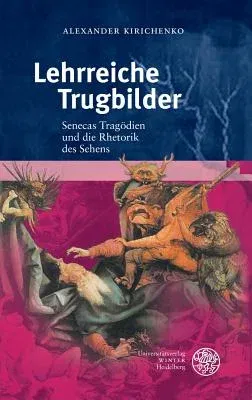English summary: Modern reception of Seneca's tragedies is dominated by
the opposition between rhetoric and theater, and between philosophy and
literature. This study aims at overcoming such dualistic thinking. This
is achieved mainly with the help of an analysis of the rhetorical
mechanisms meant to transform the visually overwhelming effect of
Seneca's rhetoric into a cognitive process. Seneca's rhetoric of vision
is subsequently considered both in the context of the visual aesthetics
of the Roman Empire as well as in the scope of Seneca's philosophical
oeuvre. As a result, this volume provides a differentiated portrait of a
'Seneca tragicus' whose rhetoric is deeply theatrical, whose dramatic
vigor can only develop its power thanks to his static rhetoric, who uses
literary allusions for philosophical purposes, and who remains
essentially a poet, especially in his most philosophical moments. German
description: Die moderne Rezeption der Tragodien Senecas wird von den
Oppositionen zwischen Rhetorik und Theater und zwischen Philosophie und
Literatur dominiert. Die vorliegende Studie hat zum Ziel, dieses
dualistische Denken zu uberwinden. Das gelingt vor allem durch eine
Analyse der rhetorischen Mechanismen, die dazu dienen, den visuell
uberwaltigenden Effekt der senecanischen Rhetorik in einen kognitiven
Prozess zu transformieren. Senecas Rhetorik des Sehens wird
anschliessend sowohl im Kontext der kaiserzeitlichen visuellen Asthetik
als auch innerhalb von Senecas philosophischem Oeuvre betrachtet. Als
Folge entsteht ein differenzierteres Portrat des 'Seneca tragicus',
dessen Rhetorik zutiefst theatralisch ist, dessen dramatische Dynamik
durch die statische Rhetorik ihre Kraft uberhaupt erst entfalten kann,
der literarische Anspielungen zu philosophischen Zwecken verwendet und
gerade in seinen philosophischsten Momenten vor allem ein Dichter
bleibt.

